© 2025 MJH Life Sciences™ , Patient Care Online – Primary Care News and Clinical Resources. All rights reserved.
Behcet Disease 2020 Research Review: 8 Studies
Behcet disease research in 2020 spanned topics in diagnosis, pharmacologic management and quality of life. We wrap up the year with 8 new study summaries.
Behçet disease (BD) research published in 2020 included guidelines for management during the COVID-19 pandemic and spanned topics from challenges in (and solutions for) BD pediatric diagnosis to a promising, cost-effective predictor of BD activity.
Following are highlights of 8 new studies, a concise summary now cataloged in the Patient Care Behçet Disease Topic Resource Center. You can visit the TRC by clicking on the link at the end of the slide show.
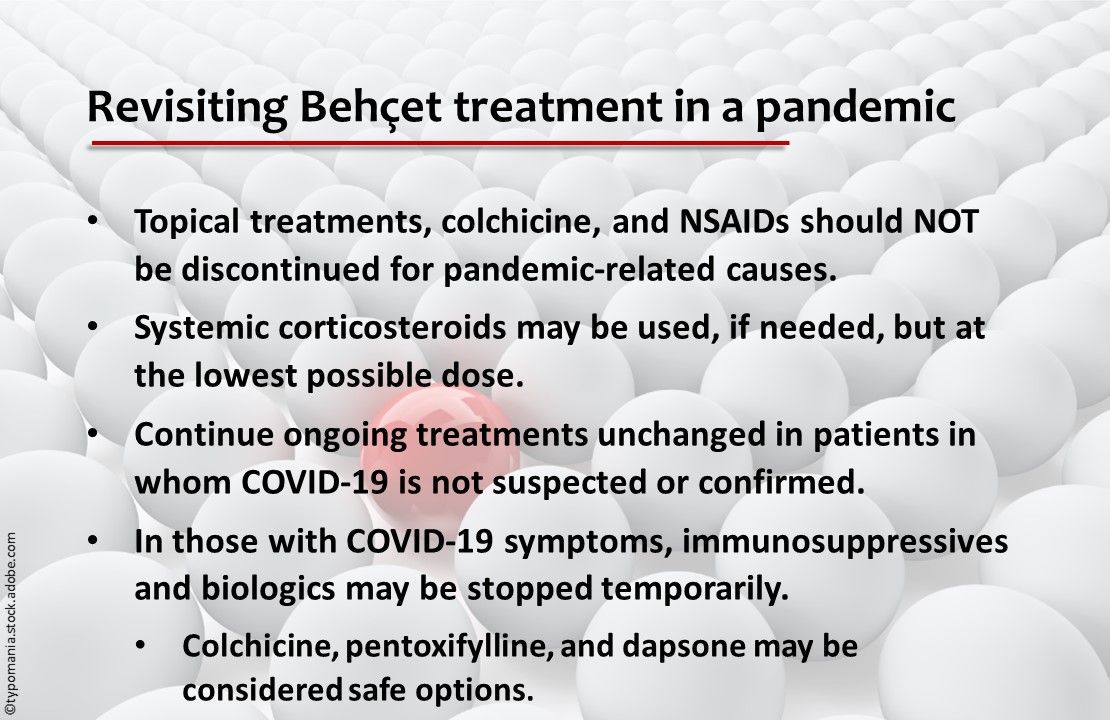
Revisiting Behcet treatment in a pandemic. Treatments for patients with BD—topicals, colchicine, and NSAIDs—should not be discontinued for pandemic‐related causes, concluded the authors of a recent review. Systemic corticosteroids may be used, if needed, but at the lowest possible dose. Ongoing treatments may be continued unchanged in patients in whom COVID‐19 is not suspected or confirmed. In those with COVID‐19 symptoms, immunosuppressives and biologics may be stopped temporarily. Colchicine, pentoxifylline, and dapsone may be considered safe options. Dermatologic Therapy.

How manifestation location affects disease activity. The locations of minor oral ulcers in patients with BD helped predict disease activity in a recent study. Minor oral ulcer at the buccal mucosa was linked with lower median 2006 Behçet’s disease current activity form (BDCAF) score and at the tonsil with higher BDCAF score. Ocular manifestations, along with male sex, were related to higher dose of corticosteroids and morbidity. Genital ulcers may be associated with more favorable outcomes. Clinical, Cosmetic and Investigational Dermatology

Special diagnostic challenges in children. Pediatric-onset BD often presents an incomplete clinical picture, posing considerable clinical challenges, suggested review authors. Unlike in adults, the disease often remains active and new symptoms appear over time. The time to diagnosis generally is longer in pediatric patients (2 to 5 years) than in adults. A detailed history and systemic examination are recommended together with a long critical monitoring during follow-up. The recent introduction of diagnostic criteria for BD in pediatric patients may help. Therapeutics and Clinical Risk Management.
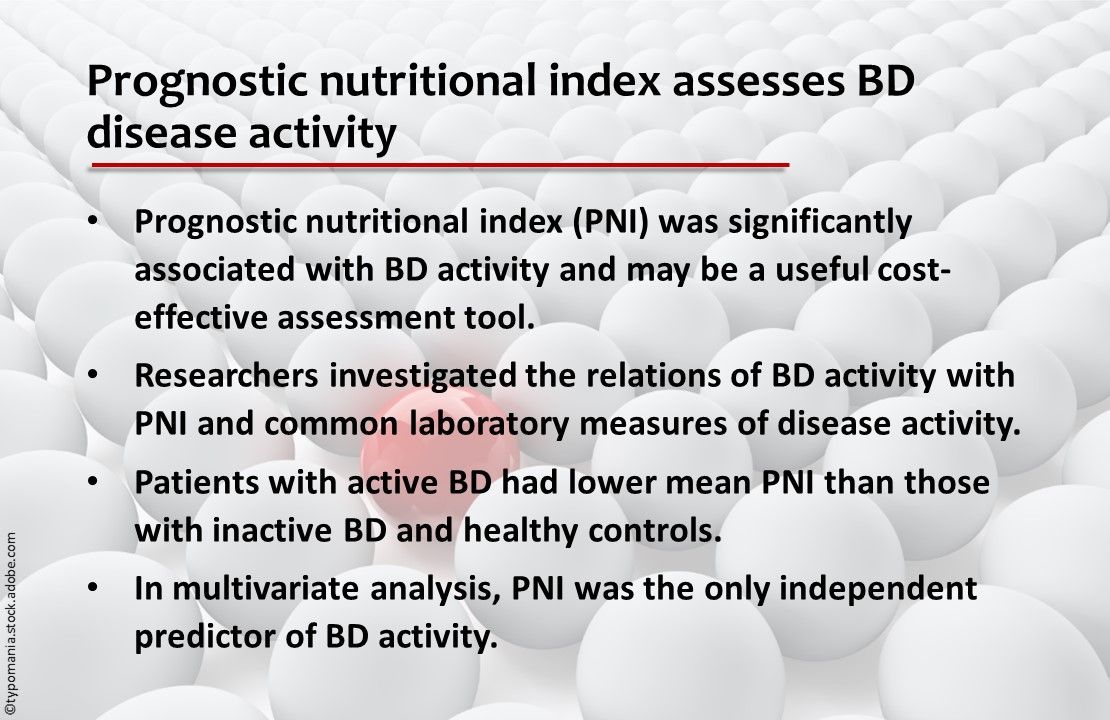
Prognostic nutritional index assesses disease activity. Prognostic nutritional index (PNI) was found to be significantly associated with BD activity in a cross-sectional study and may be a useful assessment tool. Researchers investigated the relations of BD activity with PNI, neutrophil-to-lymphocyte ratio, platelet-to-lymphocyte ratio, erythrocyte sedimentation rate, and C-reactive protein level. Patients with active BD had lower mean PNI than those with inactive BD and healthy controls. In multivariate analysis, PNI was the only independent predictor of BD activity. European Journal of Rheumatology.
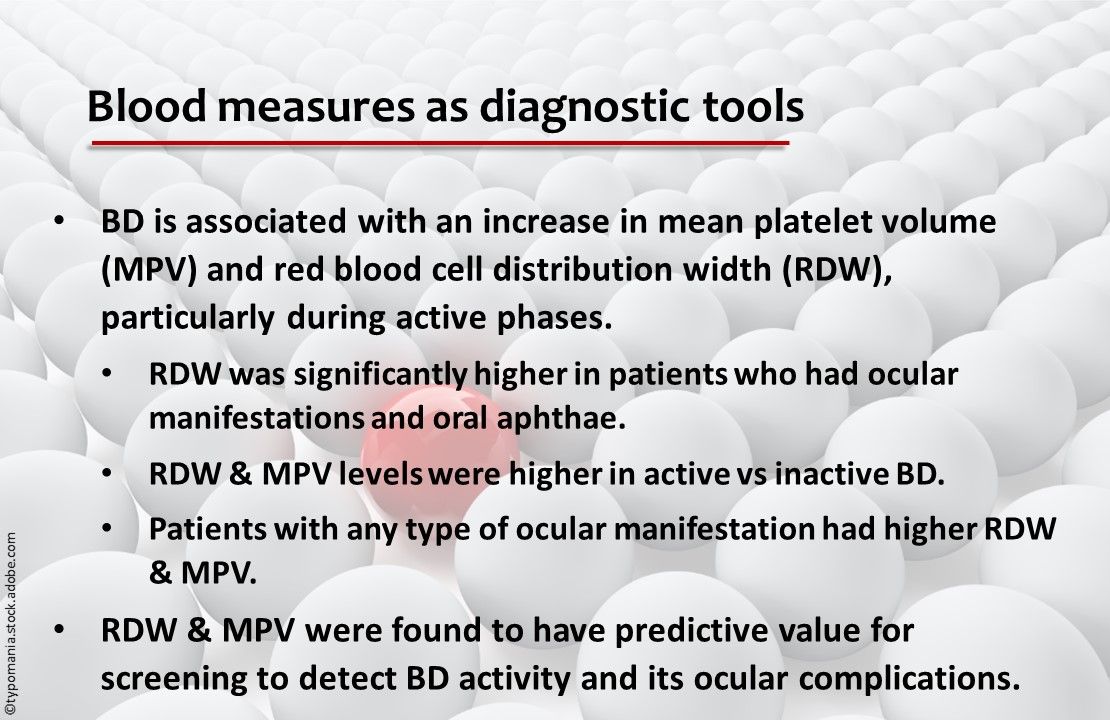
Blood measures as diagnostic tools. BD is associated with an increase in mean platelet volume (MPV) and red blood cell distribution width (RDW), particularly during active phases, a study found. RDW was significantly higher in patients with BD who had ocular manifestations and oral aphthae. Patients with active BD had higher RDW and MPV than those with currently inactive BD. Patients with any type of ocular manifestation had higher RDW and MPV. RDW and MPV were found to have predictive value for screening to detect BD activity and its ocular complications. Orphanet Journal of Rare Diseases.
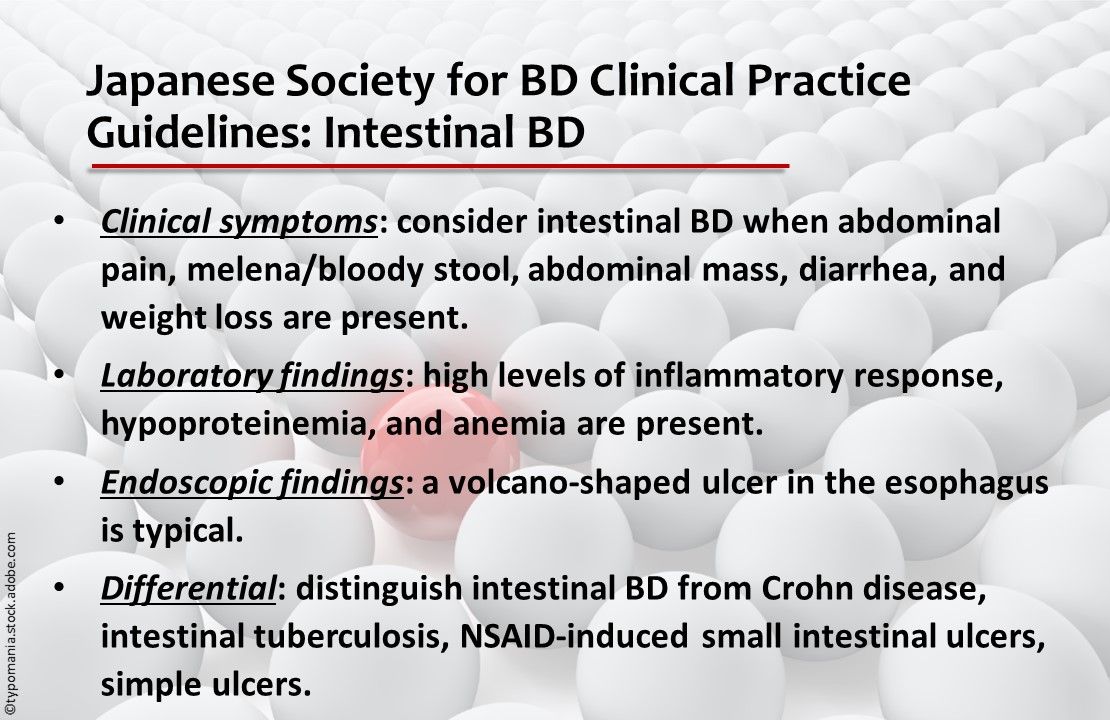
Intestinal guidelines. Japanese Society for BD Clinical Practice Guidelines for BD offer recommendations on intestinal BD: clinical symptoms—consider intestinal BD when abdominal pain, melena/bloody stool, abdominal mass, diarrhea, and weight loss are present; laboratory findings—high levels of inflammatory response, hypoproteinemia, and anemia are present; endoscopic findings—a volcano-shaped ulcer in the esophagus is typical; and differential—distinguish intestinal BD from Crohn disease, intestinal tuberculosis, NSAID-induced small intestinal ulcers, and simple ulcers. Journal of Gastroenterology.

Rare rheumatologic disease therapy review. In a survey of the current evidence on rare rheumatologic disease pharmacotherapies, apremilast and interferon-α showed promising results for total and partial remission for BD. Solid evidence was found for idursulfase for Hunter syndrome. Tocilizumab showed promising results for relapse-free remission in giant cell arteritis. The authors suggested their meta-analysis may encourage physicians to more often consider a rare disease as a differential diagnosis with a limited set of therapeutic options. Orphanet Journal of Rare Diseases.
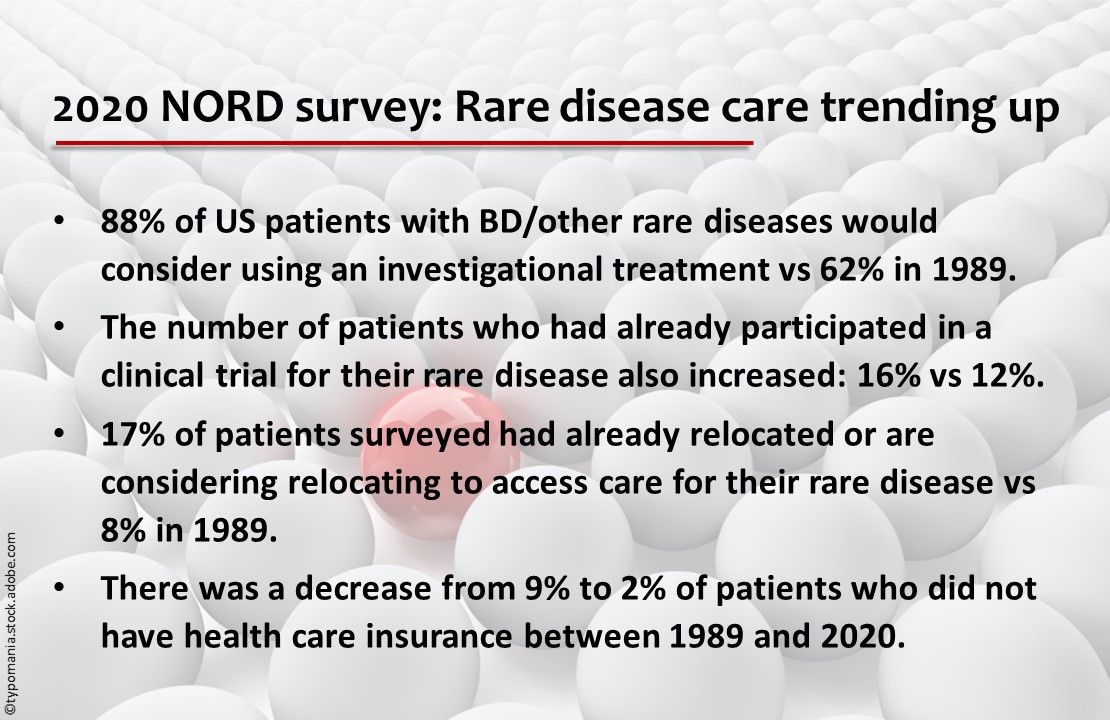
2020 NORD survey: Rare disease care trending up. In a November 2020 report that identifies trends in diagnosis, care, and treatment of patients with BD and other rare diseases in the United States, 88% reported they would consider using an investigational drug or treatment, up from 62% in 1989. Increases also were seen in patients who had already participated in a clinical trial for their rare disease (16% vs 12%) and in those who already relocated or are considering relocating to access care for their rare disease (17% vs 8%). Patients who did not have health care insurance decreased, from 9% to 2%. National Organization for Rare Disorders.
____________________________________________________________________________________________________

